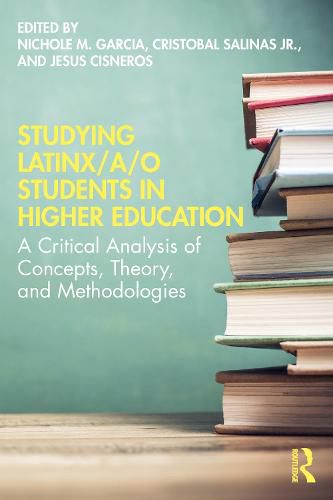Readings Newsletter
Become a Readings Member to make your shopping experience even easier.
Sign in or sign up for free!
You’re not far away from qualifying for FREE standard shipping within Australia
You’ve qualified for FREE standard shipping within Australia
The cart is loading…






This edited volume examines the diverse Latinx/a/o student populations in higher education. Offering innovative approaches to understand the asset-based contributions of Latinx/a/o students and the communities they come from, this book showcases scholars from various disciplines, including, psychology, sociology, higher education, history, gender studies, and beyond. Chapter authors argue that various forms of knowledge and culturally relevant methodologies can help advance and promote the success and navigation of Latinx/a/o students. The contributors of this book challenge the deficit framing often found in higher education, and expand conceptualizations, theories, and methodologies used in the study of Latinx/a/o student populations to incorporate AfroLatinx/a/o perspectives, center Central American students in research, and bring Undocumented Critical Theory into the conversation.
This important work provides a guide for higher education and student affairs scholars and practitioners, helping create knowledge to better understand Latinx/a/o student populations in higher education.
$9.00 standard shipping within Australia
FREE standard shipping within Australia for orders over $100.00
Express & International shipping calculated at checkout
This edited volume examines the diverse Latinx/a/o student populations in higher education. Offering innovative approaches to understand the asset-based contributions of Latinx/a/o students and the communities they come from, this book showcases scholars from various disciplines, including, psychology, sociology, higher education, history, gender studies, and beyond. Chapter authors argue that various forms of knowledge and culturally relevant methodologies can help advance and promote the success and navigation of Latinx/a/o students. The contributors of this book challenge the deficit framing often found in higher education, and expand conceptualizations, theories, and methodologies used in the study of Latinx/a/o student populations to incorporate AfroLatinx/a/o perspectives, center Central American students in research, and bring Undocumented Critical Theory into the conversation.
This important work provides a guide for higher education and student affairs scholars and practitioners, helping create knowledge to better understand Latinx/a/o student populations in higher education.